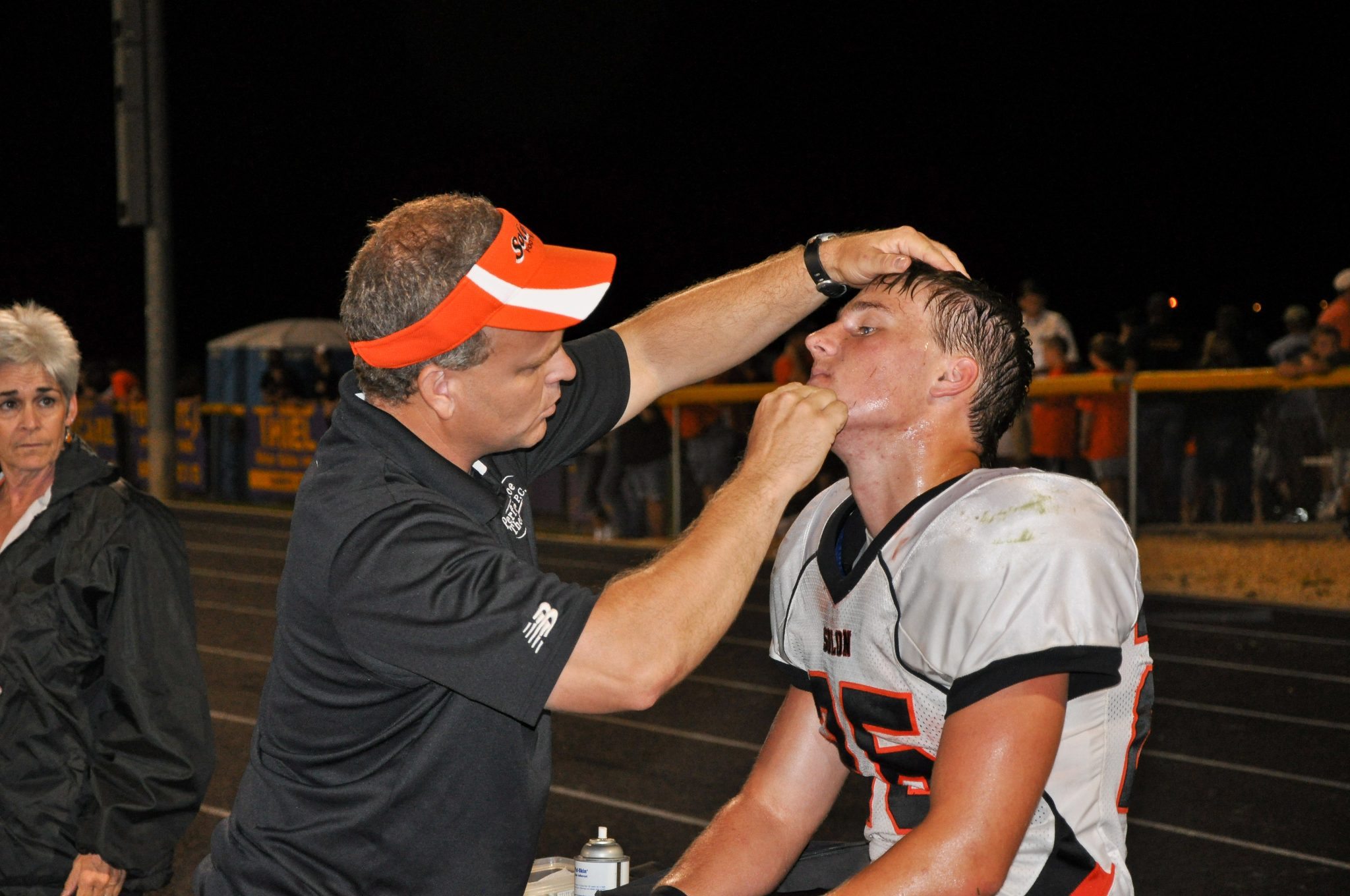The Risk of Returning to Play Too Soon After a Concussion

Updated. Originally published on September 29, 2016.
Concussions have been a growing topic of discussion on and off the field of play.
Concussions defined by the Center for Disease Control is a traumatic brain injury (TBI) that can be caused by a blow to the head or through whiplash. This blow causes the brain to shift back and forth in the skull damaging the brain tissue. This “blow” can vary in severity causing the concussion and not just the “hard hits” in football could lead to a concussion. This is why everyone should be aware of some signs and symptoms that occur once someone experiences a concussion.
Signs and Symptoms of Concussion
Not everyone expresses the same symptoms or has the same severity of symptoms. Below are several symptoms to be aware of:
- Headache
- Pressure in head
- Neck pain
- Nausea/vomiting
- Dizziness
- Blurred Vision
- Balance problems
- Sensitivity to light
- Sensitivity to sound
- Feeling slowed down
- “In a fog”
- Difficulty concentrating
- Difficulty remembering
- Fatigue
- Confusion
- Drowsiness
- Emotional
- Irritable
- Depressed
- Anxious
- Difficulty falling asleep
- “Do not feel right”
Concussions are not a cookie cutter diagnosis, so if you think you or someone you know might be experiencing a concussion please have them seek medical attention immediately to get the care they need.
Seeking Treatment for a Concussion
It is important to seek care immediately following a concussion because the brain is a very sensitive organ. If unreported and there is another “blow” symptoms can worsen, second-impact syndrome, and death can occur. Physicians and Athletic Trainers are doing many things these days to help with the diagnosis and the treatment of concussions. As an athletic trainer working at several high schools I utilize the SCAT 5. It evaluates an athlete’s symptoms and runs them through a series of mental and physical challenges to test the brain. Some high schools and colleges may even use ImPACT, which is a computerized test to challenge the brain with several different mental activities to see if the athlete has a concussion. Upon being diagnosed there are several steps that need to happen before the individual returns to normal activity. The first step is rest. By rest I mean limiting brain activity such as class time and screen time. If needed, Tylenol can be taken (as prescribed on the bottle) to calm some of the symptoms during the rest period. DO NOT TAKE ASPRIN OR IBPROFEN! Do not take any other medication unless told otherwise by a healthcare professional. If any symptoms start to get worse seek medical attention ASAP. Then if symptoms are deteriorating and once they are 100% gone the return to learn and return to sport process can begin with your medical professional.
Return to Learn and Sport
Iowa has initiated a new policy for high schools which is the return to learn policy. This means that the athlete must return to his or her learning atmosphere completely before trying to return to sport. This will start with no school, then proceeding to a half day, then into a full day of school with no symptoms.
Once the athlete has returned to a full day of school with no symptoms he or she may proceed with the return to play protocol. Here at Performance, a flowchart was created to assist in specifics for each sport. Each step of the protocol must be completed 24 hours apart and approved by a medical professional. This progression is gradual and can help prepare the athlete for the type of activity he or she might be anticipating.
Conclusion
Concussions are a slow return to normal activity, but it is worth it to avoid any other long term mental side effects that can occur from returning too soon. My biggest advice for a quick recovery is, patience and do what is expected and not more. If there are any other questions regarding concussions and their care please feel free to contact Performance Therapies.
Want to learn more about Concussions?
These are some trusted resources, articles and published journals we recommend:
Management of Sport Concussion in the Journal of Athletic Training
National Athletic Trainer’s Association website
Sport Concussion Assessment Tool and supporting documentation
Concussion 101 Flyer from the National Athletic Trainers’ Association
What is a Concussion by the Centers for Disease Control and Prevention